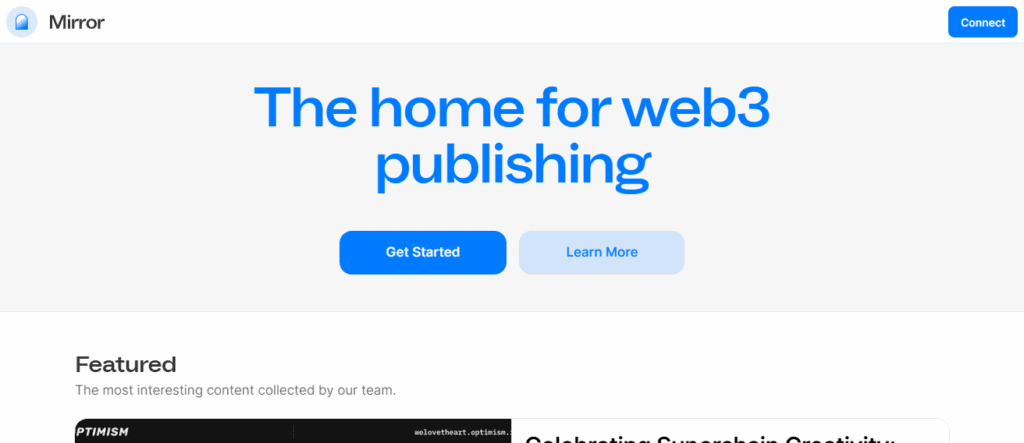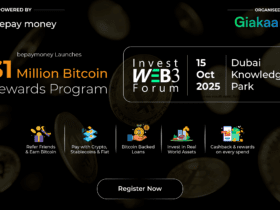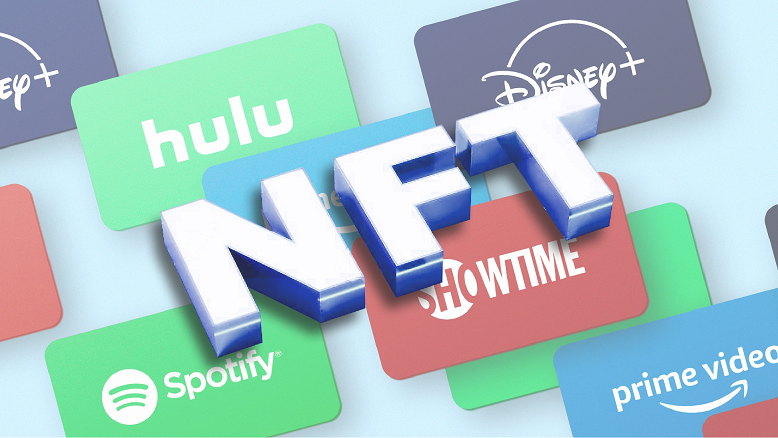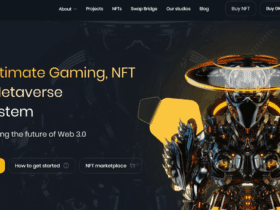This time I will examine NFT-Based Subscription Services and how they innovate the creation and distribution of exclusive content.
Ascribed membership positions provide access to premium experiences, digital items, and community perks.
I will delve into functionalities, advantages, and the reason for the growing prevalence of such services in the dynamically evolving Web3 environment.
Key Poinst & NFT-Based Subscription Services
| Platform | Key Point / Focus |
|---|---|
| Unlock Protocol | Decentralized membership & access control using NFTs; unlock content or experiences via NFT ownership. |
| Royal.io | Music NFT platform allowing artists to sell royalties and engage fans via NFT ownership. |
| Audius | Decentralized music streaming platform where artists can share music directly with listeners. |
| Mirror.xyz | Decentralized publishing platform; enables crowdfunded projects, token-gated content, and Web3 writing. |
| Zora | NFT marketplace and protocol for creators; supports dynamic pricing and on-chain auctions. |
| Manifold | NFT creation platform; allows artists to mint smart-contract-based NFTs without coding. |
| Rally | Creator economy platform; enables creators to launch personal tokens for community engagement and monetization. |
| Bitski | Web3 wallet & NFT platform; focuses on connecting mainstream users to NFTs with easy onboarding. |
| ClubNFT | Community-driven NFT platform for creators; focuses on membership, collaborations, and NFT drops. |
| Subscapes (on Art Blocks) | Generative NFT art project on Art Blocks; emphasizes algorithmic, programmable artwork. |
10 NFT-Based Subscription Services
1. Unlock Protocol
Unlock Protocol allows creators and developers to monetize content, services, or experiences using blockchain-based memberships. It allows flexibility and transparency unlike traditional subscriptions.
Each key is represented by an NFT that allows users to join different events, communities, or content. The creators have total control over the pricing, access rules, and duration of the membership.

As a Web3 creator, the open protocol’s endless integrations with websites, applications, and other digital platforms make it simple to build transferable, strongly secured gated experiences. It also provides creators the opportunity to reward loyal users.
Pros And Cons Unlock Protocol
Pros
- True decentralization of the platform: no intermediaries.
- NFT pricing is versatile: can be limited in time or perpetual access.
- Usable across many platforms and websites.
- Guaranteed access control: blockchain provides transparent and secure access control.
Cons
- Casual users may find it complex because of the requirement of crypto wallets and some blockchain understanding.
- Adoption scope and gas fees on some chains may impact micro subscriptions.
2. Royal.io
Royal.io combines music and NFTs allows fans to invest in songs and receive shares of streaming revenue while offering artists the ability to receive their royalties directly.
Users can mint NFTs that represent music royalties, and fans are able to purchase the NFT to invest in the songs.
Royal.io focuses on the active participation of fans and enables them to have a close and deeper interaction monetarily wiht the artists.

It takes full advantage of the public ledger of a blockchain to determine revenue distribution and ownership to streamline revenue flow and ownership disentanglement.
It tokenizes music rights and provides a new funding model while providing supporters and investors a new incentivive and unique access.
Royal.io creatively blends traditional music monetization and the decentralized Web3 ecosystem, providing collectors and supporters unique access.
Pros And Cons Royal.io
Pros
- Enables fans to buy music royalties via NFT.
- Engaging interaction between fans and artists.
- Fans enjoy long-term loyalty benefits.
Cons
- Royalty revenues are limited to music streaming.
- Traditional music listeners will be clued out to the NFT and royalty dynamics.
- Music streaming is royalty-dependent.
3. Audius
Audius is a blockchain and crypto-based music streaming service. It allows musicians and artists to upload and share their music and interact with their audience.
Audius utilizes blockchain technology to make splitting revenue easier and gives artists more control over their music.
Audius alllows artists to upload music, fan interact, and control music releases using social media and tokenized systems. Users listen to music for free and receive tokens, and can also participate in governance.

Audius’s innovative features also allows creators to issue NFTs, providing limited releases to collectors. Audius is also the very first m Web3 music service.
It focuses on decentralization and aims to split revenue equally with users. It encourages users to participate in governance and aims for a censorship-free ecosystem.
Pros And Cons Audius
Pros
- Middlemen are eliminated: the model is direct from artist to fan.
- Fans are rewarded with tokens and NFTs.
- Platform is free, with optional premium features users can pay for.
Cons
- On the platform, NFT-based subscriptions are still experimental.
- Artists still have trouble monetizing at scale in comparison to the alternative method of streaming tiles.
- Understanding both crypto literacy and NFTs is needed for adoption.
4. Mirror.xyz
Mirror.xyz is a decentralized publishing platform that mixes content creation with blockchain monetization and governance.
Writers and creators can publish articles, crowdfund projects, and launch tokenized communities directly on-chain.
With NFT-based access management, creators can sell articles and exclusive content, offer various supporter tiers, or release bonus materials.

Projects can also crowdfund disguised crypto contributions for transparent funding and ownership.
Adopting decentralized identity, governance tokens, and web-based tech, Mirror.xyz shifts publishing to a creator-first model with governance tokens
Active Web3 participation, and all the revenue streams, audience engagement, and work control a writer could want.
Pros And Cons Mirror.xyz
Pros:
- Monetized subscription plans or paywalls for exclusive posts can be implemented with token gated content.
- Crowdfunding through NFTs or crypto is possible.
- Digital publications can have access and ownership functionality.
- Creators can own the work and have complete control over monetization.
Cons:
- Less beneficial to the general public, more to the audience of writers and creators.
- Understanding crypto wallets and NFT minting is a necessity.
- Community backing is essential for crowdfunding and subscriptions.
5. Zora
Zora is a platform where creators can mint, sell, and auction NFTs, empowering creators with complete control over their digital assets and bypassing the auction house.
Integrated with a decentralized system, Zora permits transparency and programmability in transactions. Zora focuses primarily on NFT technology, empowering both creators and collaborations with alternate monetization paths.

Zora is a self-managed platform and lets users keep track of digital assets, apply smart contracts on sales, and trade assets in a flexible sales system.
Users can govern the active and monetized assets in Zora’s Web3 ecosystem to strengthen community-driven initiatives.
Pros And Cons Zora
Pros:
- With dynamic NFT pricing and auctions, revenue potential increases.
- Creators have complete control over sales and subscriptions.
- Community and collaborative projects are supported.
- Complete decentralization of the marketplace ensures transparency.
Cons:
- The platform is a marketplace more than a dedicated subscription platform.
- NFT ownership might be burdensome to a casual subscriber.
- Gas fees can increase the price of micro-subscriptions.
6. Manifold
Manifold is a platform that allows artists to mint and customize NFTs with no technical knowledge required through the use of a no-code minting feature.
It also provides smart contract templates, handles metadata, and integrates with multiple marketplaces.
These attributes ensure that creators have full autonomy over their digital art and IP. Unlike other platforms that use shared contracts
artists have the autonomy to deploy their own contracts which means they retain full control over ownership and revenue.

Manifold offers generative art, collectibles, and multimedia NFTs which appeals to both new and seasoned artists.
It eases the technical complexities of blockchain, allowing creators to concentrate on their art while benefiting from the security, transparency, and permanence of decentralized networks.
Pros And Cons Manifold
Pros:
- NFT minting is simple, allowing for the no code creation of NFTs.
- Smart contracts are secured on ownership and revenue as there is full control over the smart contracts.
- NFT gated content or memberships are supported.
- Integrates with major NFT marketplaces.
Cons:
- Subscription management is limited, with the need to use external tools.
- Within blockchain, creators and users interact and transact.
- Its user interface is more complicated than, for example, youtube.
7. Rally
Rally allows creators, communities, and influencers to have their own social tokens. Rally enables the fulfillment of crypto social tokens to fans, providing them with monetization rights, payment opportunities, and voting.
Rally combined value with traditional social engagements and added blockchain incentives, voicing the community.

Supporters have direct access the creator’s content, tokenized content, supported crowdfunded projects, and got monetized votes.
Rally does not only support small projects, but prefers large projects. Rally offers to its creators a token, nft, and community system, fostering a self sustaining creator economy.
Pros And Cons Rally
Pros:
- Transferable and saleable social tokens create engagement.
- Unlockable content and crowdfunded access.
- Tokenization fosters loyalty.
- Offers real world and virtual incentives.
Cons:
- Token inflation may target value.
- Wallets and tokens can be confusing for newcomers.
- Subscription perks may be intangible.
8. Bitski
Bitski is a simple Web3 platform for NFT creation, management, and wallet integration targeted towards mainstream audiences.
Users and brands, as well as artists and gamers, can safely diversify and manage NFTs on Bitski without the intricate technicalities of a blockchain, thanks to Bitski’s secure digital wallet, marketplace, and developer tools.
Bitski seeks to fill the Web2 and Web3 divide with streamlined interfaces and effortless onboarding.

Bitski branded NFT experiences, token-gated content, and commerce integrations address Web3’s apprehension.
Users can safely access blockchain assets and creators can greatly expand the NFT audience presence because of Bitski’s inclusivity.
Users onboarding onto the platform on blockchain tech will value Bitski’s dedication towards ease of use and compatibility.
Pros And Cons Bitski
Pros:
- Simplifies the NFT experience for mainstream users.
- Integrated wallet and embedded marketplace streamline subscriptions.
- Custom branded and gated access experiences.
- High emphasis on UX and WA.
Cons:
- Less decentralized; some reliance on centralized infrastructure.
- Greater benefit features are gated for users who are educated on pop-culture NFTs.
- Smaller creator economy than fully decentralized platforms.
9. ClubNFT
ClubNFT is a participatory NFT platform that is centered on membership and collaboration as well as creator-driven experiences.
ClubNFT empowers creators to decentralize project management, expand creator sponsorship, and strengthen community collaboration.

Users are able to capture value from active community participation by supporting and engaging in the spin off of limited edition social interactions and governance integrations.
By enhancing the NFT social and participatory custom ownership, ClubNFT provides creators and communities the tools for the sustainable engagement value systems with digital ownership and blockchain ecosystem.
Pros And Cons ClubNFT
Pros:
- Community enhancement drives engagement and ownership.
- Offers access to private clubs, exclusive drops, and events.
- Encourages collaboration and rewards supportive creators.
- Enables token access with governance.
Cons:
- Limited scope may stifle wider use.
- To sustain value, continual participation from the community is essential.
- For users new to the platform, NFT subscriptions may seem rather complicated.
10. Subscapes (on Art Blocks)
Subscapes is an exemplary work of generative art and is stored on Art Blocks, which is an algorithmically created NFT platform.
Each Subscape is created via code and has different and complex abstract digital scapes, making them one of a kind.
Collectors can rest assured since those unique digital art pieces are mint on the blockchain, providing them security, provenance and scarcity.
This project paired the imagination with tech and its use of randomness and digital aesthetics makes it a work of art.

Subscapes is striking in its NFT form and its intrinsic ability to be collected makes it all the more interesting.
Subscapes, like many other generative art on Art Blocks, has the advantage of being part of a curated and quality network.
This attracts those enthusiastic about blockchain and sophisticated art, making them a perfect match.
Pros And Cons Subscapes (on Art Blocks)
Pros:
- As exclusive membership cards, they can be easily converted to unique pieces of art NFTs.
- Collector’s advantage is driven by scarcity, and the blockchain-based ownership enhances provenance.
- Subscribers can boast absolute ownership of the artwork, which is fully authenticated by the blockchain.
- This is very appealing to art collectors and enthusiasts.
Cons:
- This is primarily a subscription-based platform, which is limited solely to creations of art.
- Likely, the membership fee will be so high that a mass market adoption may be stymied.
- NFT-based memberships for gated content are less effective than what is offered by other competing platforms.
Conclsuion
In summary, subscription services based on NFTs help creators to interact with their audience and earn money on content through new and unique monetization methods which offer exclusive access using block chain technology.
They offer transparency, ownership, and interaction with the community, merging traditional subscriptions with the new advantages provided by Web3.
Though there is still the obstacle of user adoption, transaction costs, and crypto literacy, these services are best suited for niche communities that are decentralized and tokenized, as well as the more technologically advanced audiences.
FAQ
A membership or access model where ownership of an NFT grants exclusive content, perks, or services.
Users purchase or hold an NFT, which acts as a key to access gated content or experiences.
Examples include Unlock Protocol, Royal.io, Mirror.xyz, Audius, Zora, Manifold, Rally, and ClubNFT.
Yes, a crypto wallet is usually required to buy, hold, or use NFTs.
Yes, some NFTs are time-limited, while others provide permanent access.













Got a Questions?
Find us on Socials or Contact us and we’ll get back to you as soon as possible.